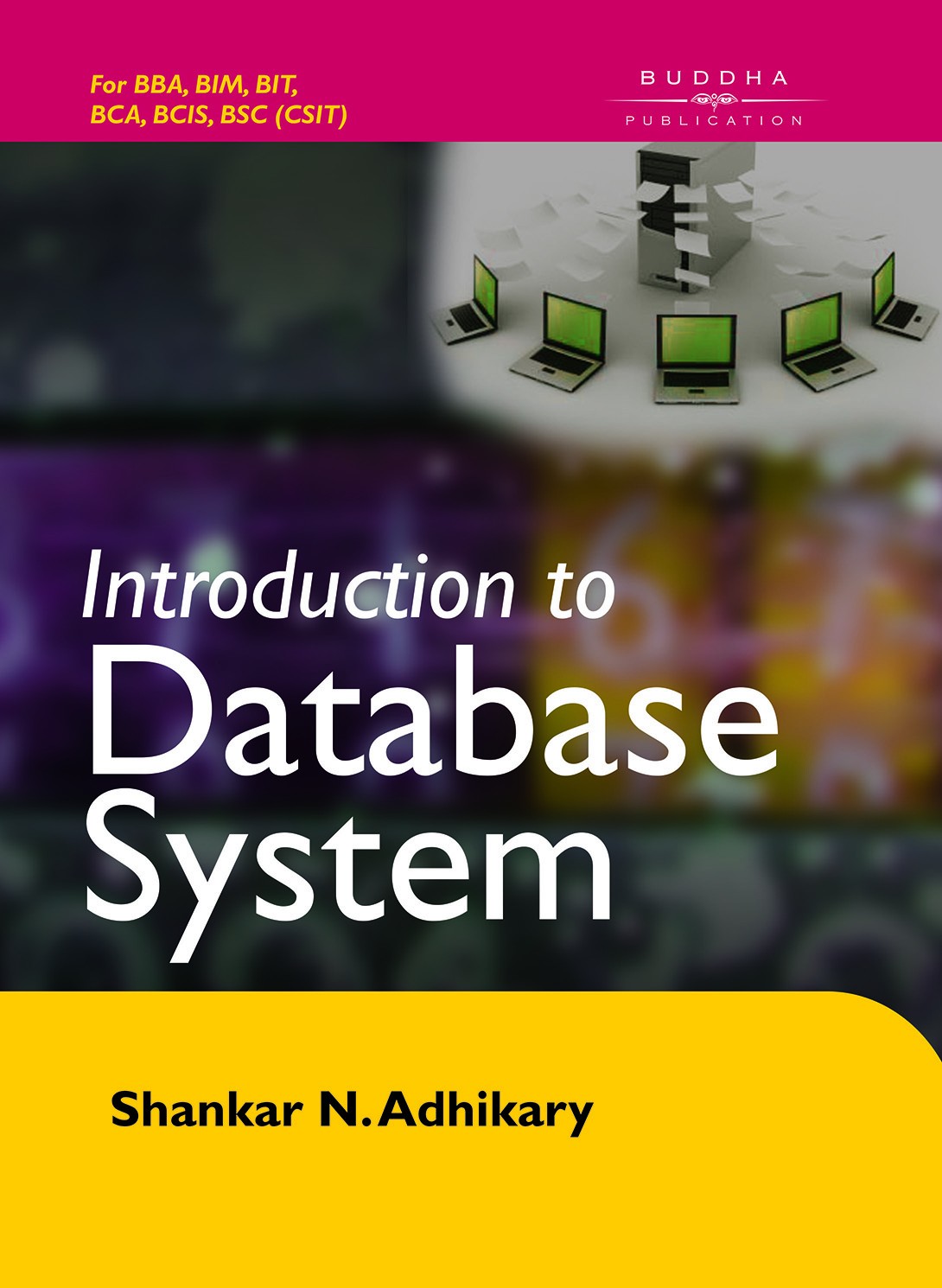
Introduction to Database System
Er. Shankar N Adhikari- ISBN: 9789937301367
- Version: English
- Price NRs. 395
- Published Year 2017
- Avaliablility: Out of stock
- University: Pokhara University
Database is a major part of modern computing system. Although database concepts, technology and architectures have been developed and consolidated in the last decades. But it has been an integral part of computing.
This book provides comprehensive treatment of databases, dealing with the complete details for academic sections. It offers a balanced view of concepts with concrete reference to current technology and to modern database management systems.
This book is composed of ten different chapters, namely Introduction to Database, Entity Relationship Model, Relational Model, Structured Query Language, Integrity Constraints, Relational Database Design, File Storage and Organization, Indexing, XML and Advance querying.
The first chapter, Introduction to Database, provide the strong background knowledge about the data and information, data processing, drawback of file based system, how these were overcome by modern database system, how data are organized. The primary goal of DBMS is to provide a way to store and retrieve database information that is both convenient and efficient. The chapter, Entity Relational Model, provides the diagrammatic representation of the DBMS, one of the best ways is using E-R Model. It perceives the real world as consisting of basic objects, called entities and relationships among these objects. The E-R model is very useful in mapping the meanings and interactions of real world enterprises onto a conceptual schema. Here I have discussed all possible relationships. The chapters, Relational model and Structured Query Language, provide the fundamentals of the relational model which gives a very simple yet powerful way of representing data. I then describe two formal query languages, in great detail. The chapter, Integrity Constraints, provides the integrity and security of databases. Here I have briefly described about domain constraints, integrity constraints and even triggers. The chapter, Relational Database Design, continuous my discussion of design issues in relational databases. In general, the goal of a relational database design is to generate a set of relation-schemas that allows us to store information without unnecessary redundancy, yet also allows us to retrieve information easily. The chapters, File Storage and Indexing, I describe various methods for implementing the data models and languages presented in preceding chapters. I start with characteristics of the underlying storage media, such as disk and tape systems. I then define various data structures that will allow fast access to data. The chapter, XML provides the basic concept of XML, different document format of XML and the application of XML on different sectors. The chapter, Advance Querying describes the basic concept of DSS, OLAP, Data warehousing and data mining.